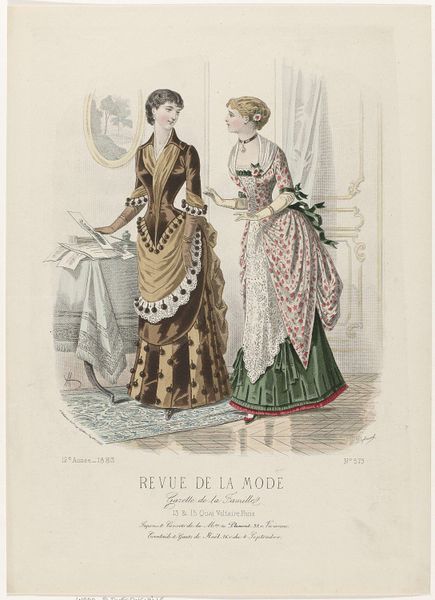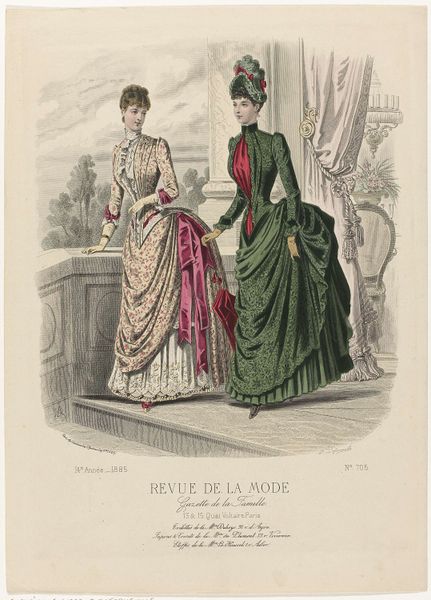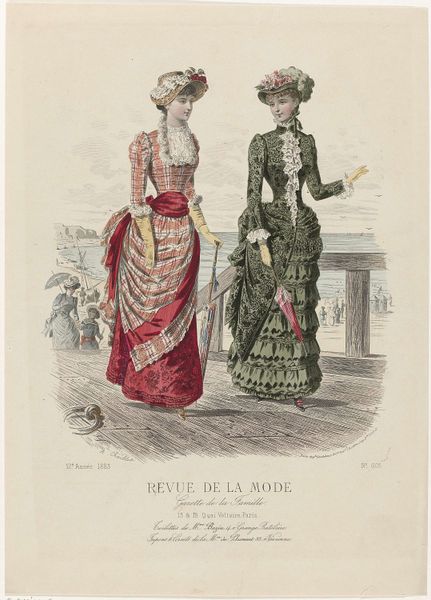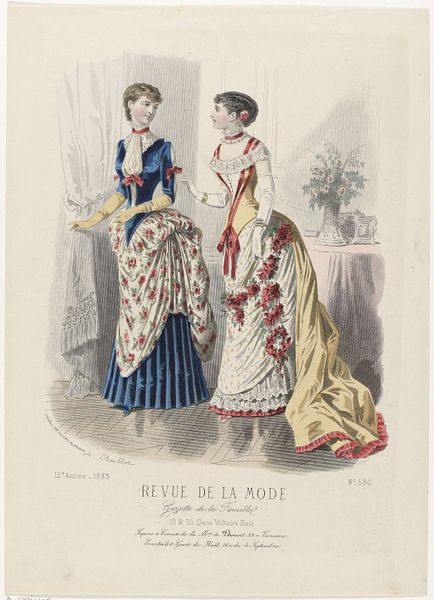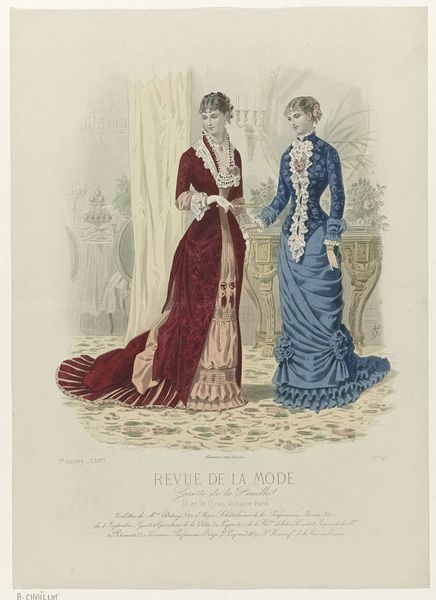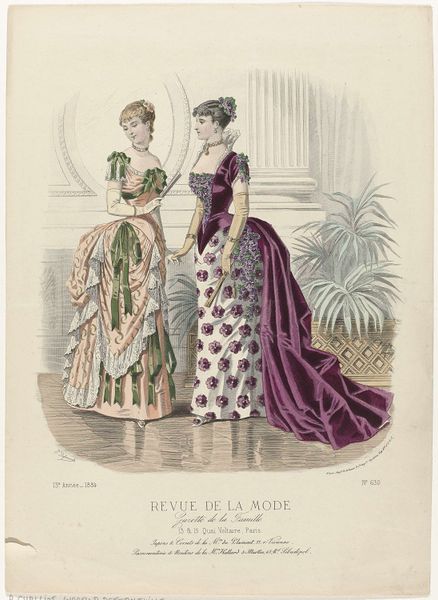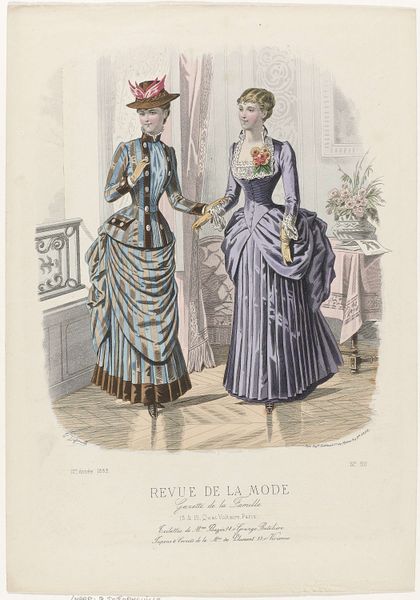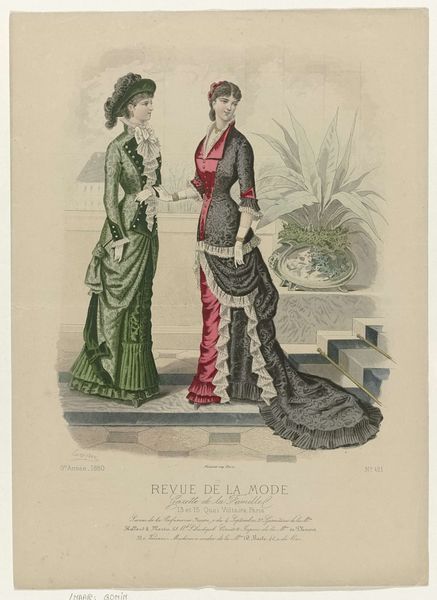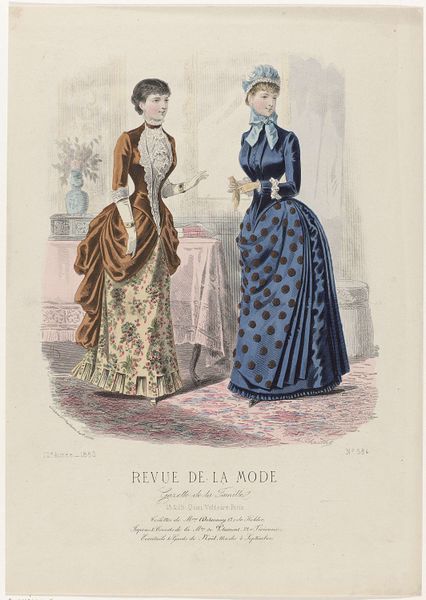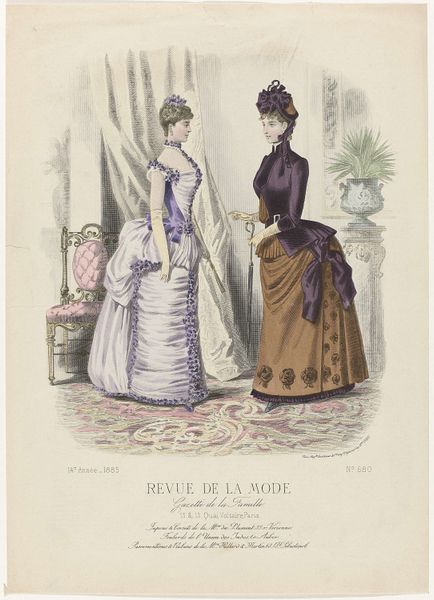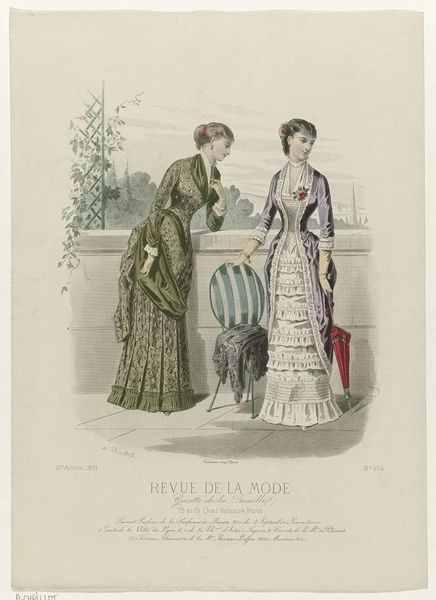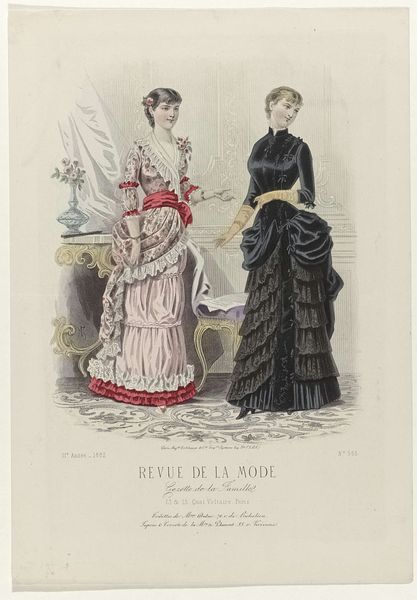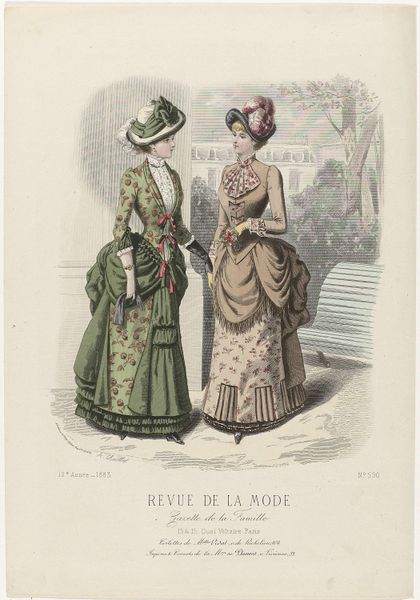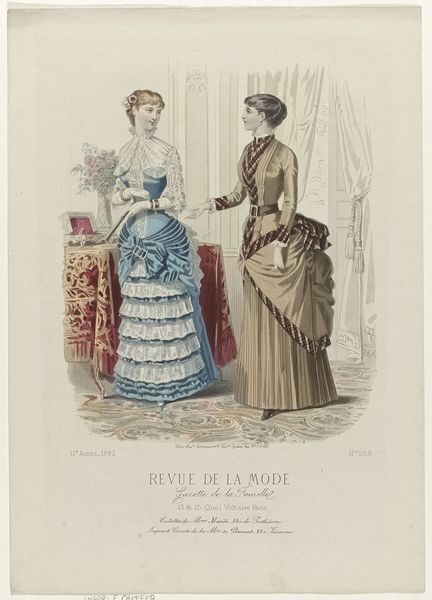
Revue de la Mode, Gazette de la Famille, dimanche 28 janvier 1883,12e annee, No. 578 bis: Toilettes de Mme Bazin (...) 1883
0:00
0:00
Dimensions: height 375 mm, width 268 mm
Copyright: Rijks Museum: Open Domain
Editor: This watercolor illustration, "Revue de la Mode, Gazette de la Famille," from 1883 by E. Cheffer, showcases two strikingly different dress styles. The detail in the ruffles and floral patterns is amazing! I’m curious, what symbolic significance can you derive from this fashion plate? Curator: Well, consider what these images were *for*. These weren't just pretty pictures; they were signals. Think about the details—the cut of the gowns, the fabrics chosen, the specific floral motifs. What might they communicate about status, aspiration, or even the shifting roles of women in late 19th-century society? Look at the image, the dress to the left, that striking blue... does that specific shade conjure anything? Editor: It feels delicate and refined, almost dreamlike. And I suppose the elaborate lace could represent wealth and leisure, right? Curator: Precisely! Lace signified handcrafted luxury, a visual shorthand for a particular kind of lifestyle. Then compare that with the sturdier green of the other dress. What narrative do these visual cues create together? Is there perhaps a commentary on different types of femininity? Editor: That makes sense. The green feels more practical, maybe for daytime activities. It's interesting how clothes act as visual language. Curator: They absolutely do. And the Revue itself becomes a fascinating artifact—a curated display of desires, values, and societal norms projected through the careful representation of fashion. Editor: I see it now! Thanks, that opened up a whole new perspective for me. Curator: Indeed! Considering historical context adds another dimension to how we perceive visual messaging through symbols.
Comments
No comments
Be the first to comment and join the conversation on the ultimate creative platform.
